
- Seeds and plants saved become acclimated to our environment, climate
- There is a greater variety of vegetables to grow
- There may be more genetic diversity when growing old-time veggies
- It is can be cost effective due to higher seed prices
Hybrids vs. Heirlooms
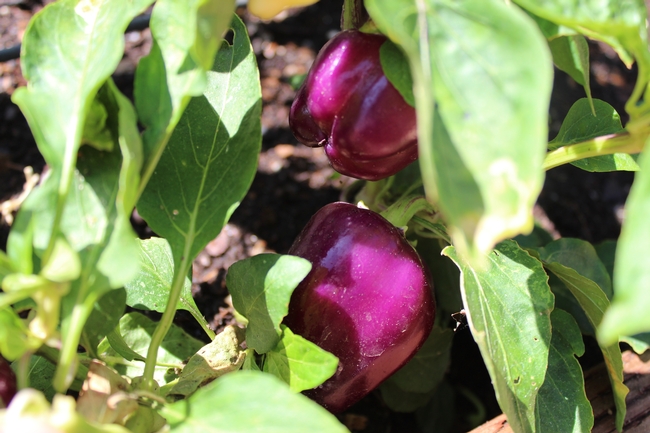
There are two major types of seeds: Hybrid and Heirloom seeds
- Hybrid seeds have been cross pollinated from two different varieties in the same plant species. They are crossed to produce seeds that carry desired characteristics or appearances.
- Seeds saved from hybrid plants will revert back to their parent plants.
- Heirloom Seeds are non-Hybrid, and open pollinated.
- Heirloom Seeds are usually more than fifty years old and have been passed down from generation to generation
- If you plant an Heirloom seed that you have saved from an Heirloom plant, it will grow true to the parent plant.
Spacing plants to prevent cross-pollination
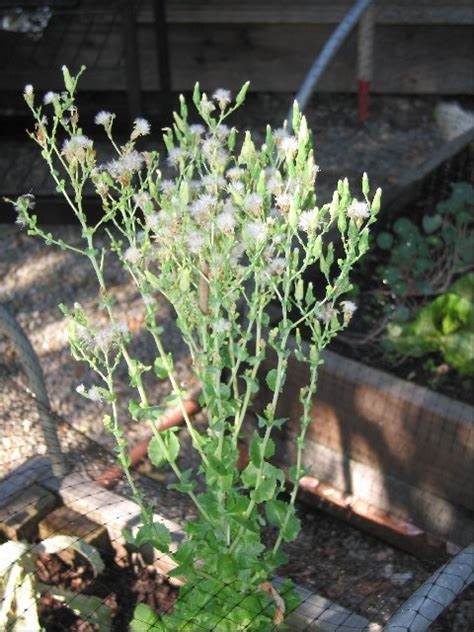
How long do seeds last?
This is dependent on the type of seed, but also on how they are taken care of after you save them. To ensure saved seeds will sprout in the future, store them in a cool, dry place away from moisture, heat, and light.
Common Beans
The seed is the mature bean. Allow the bean pod to dry on the vine. If growing more than one variety, isolate by at least 20 feet.
- Harvest the dried bean pods and place in a paper bag.
- Dry for a week or more before separating the bean from its pod.
- Grow and harvest from at least 10 plants of the same variety for diversity.
- Seeds can last up to 4 years.
Eggplant
Allow several fruits from at least 10 plants to ripen far past the edible stage. The skin will become a dark yellow or yellowish-brown color. If growing more than one variety, isolate by at least by 50 feet.
- Mash the pulp by hand as best as you can. The seeds are hard, smooth and plump and won't damage easily.
- Toss seeds and pulp into a bucket of water and stir until pulp separates from the seeds. Seeds will sink.
- Rinse until the water comes out clear. Pour seeds through a screen, spread them in a thin layer and dry for about 3 weeks.
- Seeds can last 3-6 years
Garlic
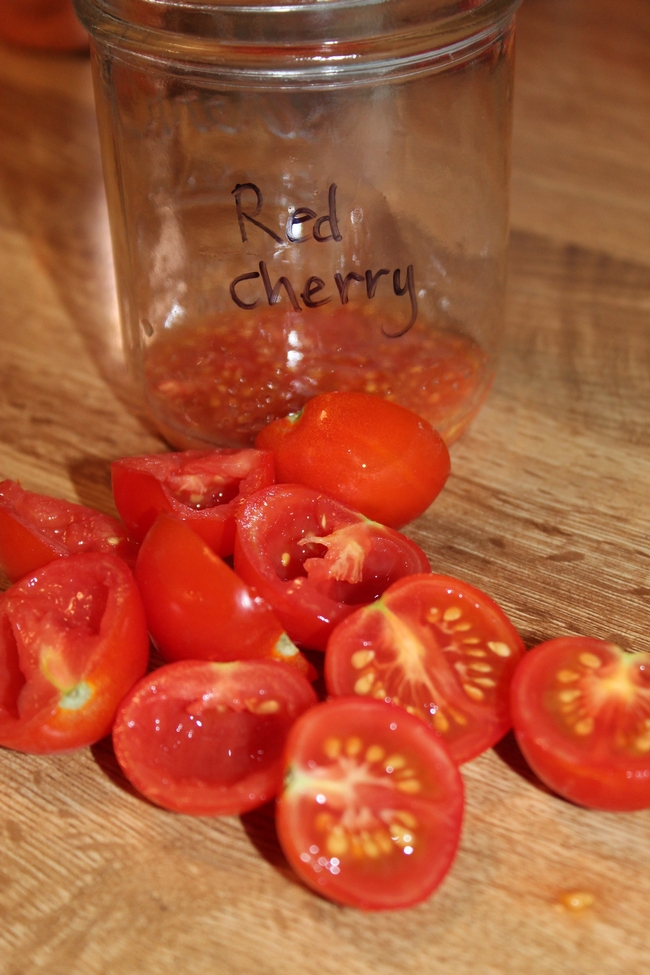
- After harvest, store garlic at room temperature to prevent premature sprouting.
- Plant from your crop every year.
Lettuce
Seeds are very easy to save. Allow a dozen plants to grow, unharvested, through the spring and summer. They will “bolt” (send up seed heads). Isolate by 20 feet if growing more than one variety. Once the seed heads are a yellowing-tan color and very dry, they are ready to save.
- Cut at the stem and place in a paper bag. Once dry, crush the heads and sift to separate the seeds from the chaff.
- Harvest from at least 10 plants of the same variety.
- Seeds can last 2-4 years.
Okra
Pods should be left on the plants until fully mature. Okra is self-pollinating but will cross via bees if two varieties are planted near each other. Plant one variety to ensure purity.
- Pick just as the seeds begin to split.
- Clip and store in paper bag for a few weeks.
- Seeds can last up to 3 years.
Peas
Peas are self-pollinating, however, keep favored plant 20 feet away if growing more than one variety.
- Allow pods to slightly dry on the vine before harvesting.
- When picked, place in a paper bag and allow to dry further for a week or two.
- Thresh them from the pod, and store in a jar or envelope.
- Seeds can last up to 5 years
Peppers
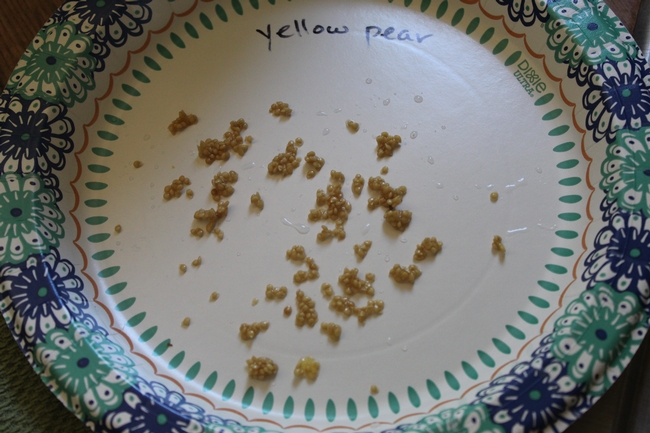
- Cut open the ripe fruit, scrape out the seeds and let dry on a paper plate for a week before storing in a jar.
- Seeds can last up to 2 years.
Tomatoes
Tomatoes are mostly self-pollinating, but to ensure purity, separate the favored plant by 10 feet. Allow the fruit to fully ripen on the stem before harvesting.
- Cut the tomato open and scoop out the seeds.
- Place the seeds in a jar of water and allow to ferment until a white mold forms on top of the water.
- During this process, cover the top of the jar with paper towel to keep flies out.
- Rinse the contents of the jar with water until it comes out clear.
- Allow seeds to settle between rinses. Good seeds will sink to the bottom each time.
- Spread seeds out on a paper plate and allow to dry for 3-4 days before storing in a paper envelope.
- Seeds can last up to 5 years.
- Watch our Tomato Seed Saving Video at https://www.youtube.com/watch?v=FvTCfcpLQgw&t=1s
Hopefully, these suggestions will inspire you to begin the exciting adventure of saving your own seeds from the crops you grow. Happy Gardening!!!
Heidi Aufdermaur has been a UCCE Stanislaus County Master Gardener since 2019; Heidi took all photos used in this article.
Resources
California Master Gardener Handbook.
Seeds Matter. www.seedmatters.org
The Heirloom Life Gardener. Bake Creek Heirloom Seed Company. Jere and Emilee Gettle.
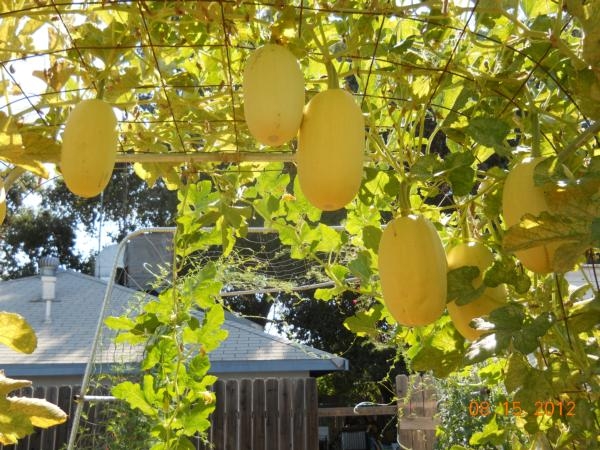
Now is the time to start thinking about which delicious vegetables you want to grow in your garden. Ted and Rho will go over all the possibilities with you in this class.
Spring Vegetables
These vegetables don't mind the cold and can be planted from seed in February. They may grow slowly, but as weather warms they will grow more quickly. Lettuce, Swiss Chard, arugula, mustard greens, and other leafy greens do well. Radishes, beets, carrots, turnips, and happy during this time as well. However, by late spring/early summer, many of these plants can't take the heat and may “bolt,” sending up flower stalks that the bees enjoy.
Summer Vegetables
You can plant these vegetables from seed or transplant in late March. They prefer warm weather and may “sulk” and grow very slowly if you plant them too early. These vegetables include melons, squash, winter squash, corn, tomatoes, and cucumbers.
Hope to “see” you there!

Where*: On Zoom. You will receive a link the morning of the class.
When: Tuesday, February 22, 2022 6:00-7:30 p.m.
Cost: Free
Register at: http://ucanr.edu/spring/veg/2022
Instructors: Master Gardeners Rho Yare and Ted Hawkins

